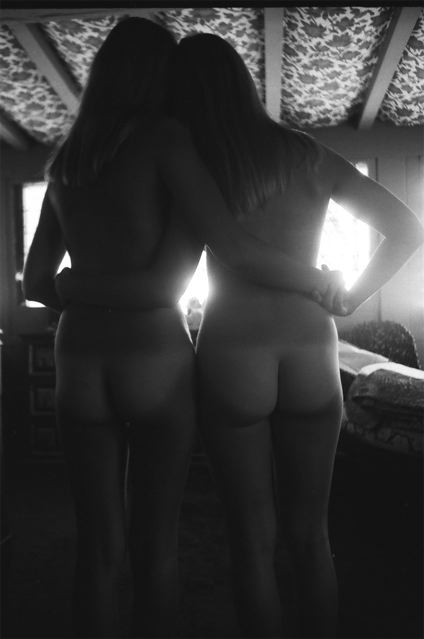Neville Wakefield, Got the Beat

Robert Stockwell, Golden Nectar (Cross), 2007; Bruce Conner. Late Night Movie On TV: June 10, 1978 @ 1:20 To 1:27 AM: Sterns Motel. Venice, CA, 1978, 1986. All Images courtesy Andrew Roth Inc.
You might say that the real world was no place for artist and publisher Wallace Berman. His first and only solo gallery show, at the Ferus Gallery in 1957, was closed by the Vice Squad. In the courtroom at his conviction he yelled at the judge, “There is no justice, there is only revenge!” He was as much myth as man: He died tragically and mysteriously, hit by a car, on his 50th birthday.
Both Berman and Los Angeles (his “City of Fallen Angels,” which he fled briefly after his arrest) loom large over Neville Wakefield’s group show, Built to Survive the Real World, featuring the works of Bruce Conner, George Herms, Dennis Hopper, and Robert Dean Stockwell. Critics and institutions generally ignore art from the 1950s and early 60s in Los Angeles, which is easily forgotten in a haze of drug use, spirituality, and works that were made (and now acknowledged) for their impermanence. Wakefield’s exhibition, which fleshes out the connections between the artists and focuses welcome attention on the former child star Stockwell, is part of a surge of interest in the photographry and assemblage from Los Angeles; currently there’s also a show of Berman works, paired with no less than Richard Prince, at Michael Kohn Gallery in Los Angeles. Interview asked Neville about these artists, their cult followings, and how he got on the Beat “beat.”
Alex Gartenfeld: Why these four artists?
Neville Wakefield: All four were close friends who supported one another through their life and art. Certain common threads ran through their art but perhaps the most noticable is their disregard for the hierarchies that traditionally elevate the fine over the folk, the created over the found, the sober over the stoned and so on. Their sensibility is united in some ways by time and place-the west coast scene that was directly informed by the Beat generation—but it’s their connection to the idea and possibility of counter-culture that I think unites their work.
AG: How did you first encounter the artists?
NW: I contacted George Herms a few years ago when I was helping Adam Kimmel do a presentation for Pitti Imagine in Florence. Adam’s collection that season drew its inspiration from Semina culture, the proto-hippy movement in California in the late 50s and early 60s. We then visited George in his studio in Topanga Canyon and realized instantly that what we’d stumbled across was an unmarked national treasure.
George Herms. Louise’s 24th Birthday Card (To Sweetie Bird, From Thunder Balls. 1-30-62), 1962. Dennis Hopper. At 1712, 1966.
AG: Do you connect these artists around a certain axis? Around Wallace Berman, or around the Ferus Gallery?
NW: Well Berman was certainly the figure around whom those artists collected, while Walter Hopps and the Ferus gallery provided the outlet for recognition. But whats really interesting to me about this group was the range of their practice. While George was making a kind of visual concrete poetry out of found objects, Dennis was taking photographs, painting and making films, Dean was making films and two-dimensional collages while Bruce Conner was crossing all mediums. The axis was certainly there but it belonged to a prevailing sensibility rather than a form or medium.
AG: Were there any anecdotes about these artists that you encountered while preparing the exhibition?
NW: George Herms who described it as a show of cronyism posed the question: If there’s one dead artist and two movie stars you have to wonder what category the other artist falls into? Coming from a man with legendary disregard for categories as well as other normally useful notions such as time and space I thought it was an interesting question.
AG: Is there a particular format that you link to these artists? The serial book format?
NW: Not really. One could say that an interest in the elevation of the ephemeral is the link but again, I don’t think that its tied to a form other than perhaps the notion of collage and what happens when different realities co-exist and collide.
AG: With all the projects now surrounding Berman, do you identify a certain timeliness to this era and type of work?
NW: I think the timeliness is perhaps to do with the fact that what you see is a direct transcription of sensibility of the perpetrator as opposed to that of fabricators and post-production facilities. Its DIY consciousness raised to artform.
AG: Have you found anything that links collectors of these artists?
NW: They all smoke pot.
Built To Survive The Real World is on view at Andrew Roth through March 14, 2009, 160A East 70th Street, New York.






